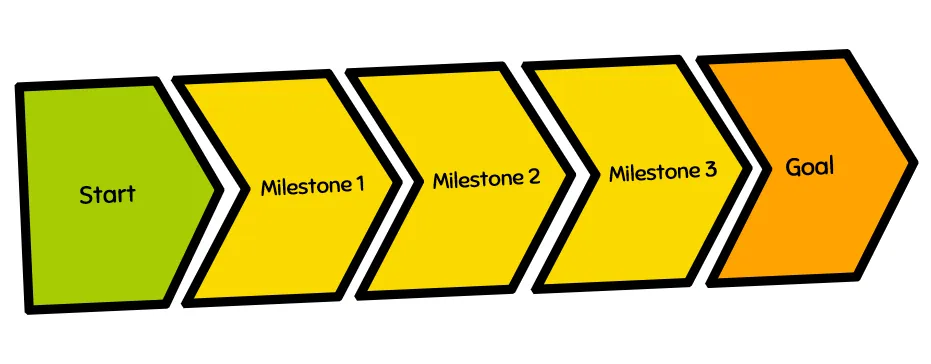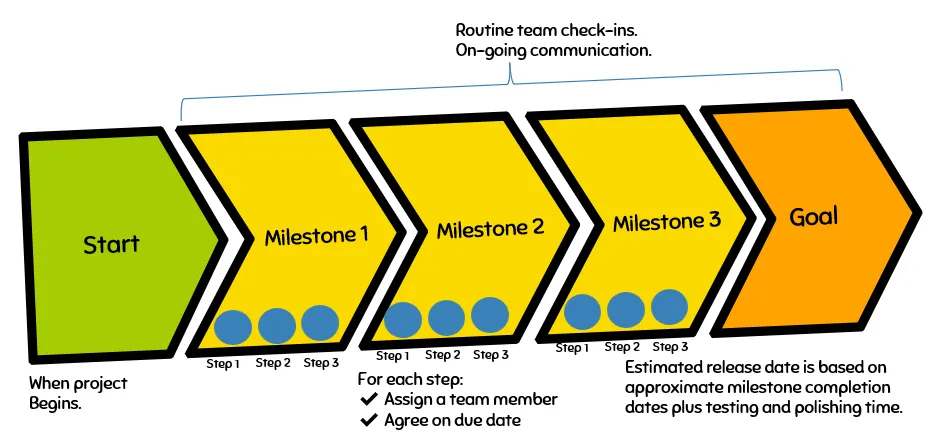The 10 Commandments of Team Dynamics
At work, you can’t always pick who your coworkers are, and you can’t pick who your boss is.
Unless you happen to own your own business or do freelance work exclusively, you generally don’t get to choose who you work with. Working with all kinds of people becomes a valuable skill in the professional world as a result - it’s not simply about what skills you bring to the table, but also how well you get along with the people you’re tasked to work with.
However, when it comes to your side hustle, everything’s for you to decide! The world is your oyster: who you work with, when you work on it, what the goal is, and all the rest. This means picking your team members knowing how to work with them are some of the most core, crucial decisions you’ll make.
So you might ask - where do you begin? Look no further - just ahead are what I consider to be the 10 commandments of team dynamics for your on-the-side project that you don’t get paid for y̶e̶t̶. These principles can apply both to you - the project leader - and also to team members.
Sometimes the line blurs between your “side hustle” and “hobby” - either way, if you have multiple people involved in your project, let’s set you up for success.
Commandments
1. Thou Shalt Find People That Do Not Suck
The first and most important commandment is finding good people. I phrased it this way because it’s generally more tough to find someone you can trust than someone you can’t… so basically, look at selecting team members by answering these two question:
- Can you trust them?
- Do they have a good attitude?
If you’ve said “no” to one or both of these questions, don’t bother. They probably suck.
What’s the effect of adding sucky people to your project? Well it’s something like this:

A common defense for adding people you don’t trust is “but they’re very skillful!” To this I say, someone can possess the right skills, but if their character is bad, it’s not worth it. There’s no pay check keeping them accountable, no promise they won’t bail or damage your work, and no reason for you to deal with it. So just don’t!
When you do find valuable, trustworthy people - reward them by giving them more control and do whatever you can to make them feel valued!
2. Thou Shalt Communicate Well
Since career and personal lives come first, you can’t always be actively involved in this side hustle. This goes for anyone on your team also.
However regularly communicating is vital to a successful project. Depending on whether you meet in person or over a digital platform (like Slack or Discord) maintaining regular contact will help keep the project moving.
If a team member keeps the leader in the dark, the project significantly slows and can lead to stagnation. There’s no 9-5 schedule here, so either impose a schedule and stick to it, or set up other healthy boundaries to facilitate strong team communication.
For all-team meetings, use tools like when2meet.com to get the best times for all concerned. If you can’t make the time, communicate! Don’t just ghost the group.
3. Thou Shalt Be Skilled Or Possess A Willingness To Learn
Consider these questions for yourself and for each member you invite to join your project:
- What value can (X) add to the team?
- What skills does (X) already possess, and which ones can be taught?
A member that may not have many skills on the outset may be able to learn. Especially if they are someone you trust, have excellent communication, and a strong aptitude for learning - it may be worth it. That’s your call to make.
4. Thou Shalt Stand Firm
Do not compromise your values! Stick to the vision you have for your project from the beginning, and rarely waver from it. That being said, some compromises are wise - this will be something you should have top-of-mind.
People should be excited they’ve been selected to be part of your project. Once they’ve joined, continue to provide incentive for them to stay engaged. Maybe set some expectations for activity with a risk of being removed from the project if they don’t meet those expectations. And don’t feel afraid to confront a team member if you feel they are under-performing. Don’t do it in a combative way, but frame it in a question, “Hey there, I feel like you haven’t been as engaged in (project X) as were you in the beginning, is everything going OK?” This will fascinate a positive, honest conversation about what can be done to improve engagement in the project.
Sometimes a team member will try to usurp a leader’s authority and change the direction of a project - be careful about that. This leads us to the next commandment…
5. Thou Shalt Find People That Share Your Vision
When you’re recruiting team members, find people that are just as excited about your project as you are.
The result? They’ll go the extra mile to see your project succeed.
It also helps prevent a mutiny or general resentment - if everyone’s aligned towards the same vision and goal, that will help push everyone towards a positive net result.
6. Thou Shalt Define A Specific Scope
A vital part of establishing a project is determining the point at which the project is “finished.” If your project is iterative, think about what might make it a “version 1.0.”
Defining a scope creates that light at the end of the tunnel all team members can work towards. Failing to define a scope means the project can become potentially endless, since there are nearly an infinite number of ways to improve or adjust a product. That’s also known more generally as development hell - something you want to avoid!
Here’s what a project’s scope might look like:

Start with your end goal, then think about what steps are required to get there at a high level. These can be considered milestones.
7. Thou Shalt Establish Deadlines
Yes, I get it. Deadlines seem scary. But not only are they helpful, they’re immensely relieving for everyone involved.
Establishing deadlines looks something like this:
- Determine tasks and build out a task list
- Delegate aforementioned tasks to specific members on your team
- Communicate with those members and offer deadline suggestions until one is agreed upon
See, that wasn’t so hard, now was it?
Assuming (#1) your team members don’t suck, (#2) their communication is good (#3) they’re fairly skilled at the completed their task, and (commandment #4) they share your vision, just the act of creating a deadline in and of itself is often motivating enough for a team member to get the task done quickly.
Setting those due dates helps motivate everyone involved by adding a little urgency to the task. It helps them visualize and flesh out exactly what’s being asked of them and gives them a clear timeline towards which to work.
If something comes up in their personal life or career, the deadline might have to get pushed back. That’s OK - feel free to work with them on this. These aren’t hard and fast rules, they are just goals to keep the project moving. I think you’ll be delighted at how well carefully established deadlines assist the flow and ease of getting your project realized.
Here’s the graphic from above, with a little extra detail added in to show how deadlines assist realizing the scope:

Within each milestone, there may be several steps or tasks. Build out each milestone until everything has a deadline and a task owner!
8. Thou Shalt Lead By Example
Don’t be afraid to do dirty work. No one likes the more manual, tedious parts of any project but they’re almost always necessary if you want your project realized. Investing yourself into the project at any level often inspired your team members to do the same thing.
This goes for the deadlines you set from #7 also - if you respect the deadlines you set yourself, so will your team. If you set up deadlines and then ignore them, your team will ignore them also.
9. Thou Shalt Recognize Excellence Both Publicly and Privately
If you have some talented team members, who are fantastic trustworthy rockstars, you’re bound to encounter some seriously stellar work. So the opportunity then arises to recognize that excellence! There are two main ways to do that within the team: publicly (so all team members see) or privately (simply communicating to the single team member).
Public recognition inspires the team as a whole. Not only does it show you notice, but gives the rest of the team another reason to go above and beyond in case they too get recognized. Everyone loves to be recognized for their accomplishments, and work done in side hustling or hobbies is no exception.
Private recognition strengthens the bond between you and the team member that did well - and can be the source of building a strong relationship with that person.
10. Realize Team Roles and Expectations
Team roles help focus team members’ efforts. If a team dynamic is naturally strong, roles will evolve organically. But if you so choose, spelling them out explicitly can also be a good idea.
When it comes to side hustles and hobby projects though, I’d discourage you from trying to create silos. In other words, just because a team member has a job title, don’t try to limit their contributions to things related to that role. With the exception of someone who’s simply overworking themselves, allow team members opportunities to expand their skill set!
Conclusion
There you have it. Now you have everything you need to make something cool.
So, what are you waiting for? Get your A team together and make your dream project.
If you’re curious about some of the projects I’ve released with this tactic, I’ll give you one:
Resources
A SlideShare presentation of this topic is available. If you’d like a downloadable version of it instead, it’s also available here as a PDF.

